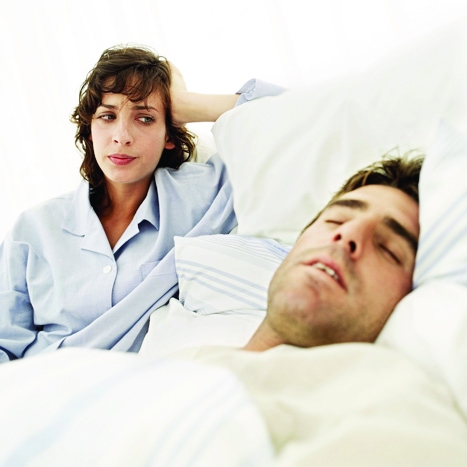Software developed in the UK and China could soon help people get a good night’s sleep.

SleepGuard software is said to take advantage of sensor data provided by smartwatches to monitor wearers' sleep patterns. SleepGuard is also claimed to estimate sleep quality and provide users with advice on how to sleep better.
In use, SleepGuard tracks non-biomedical factors such as body movements, sounds related to sleep disorders, and ambient lighting. So far, the device has been tested on 15 study participants and results show that the software can estimate sleep-quality at a similar accuracy to consumer-grade sleep monitors.
The research team from Lancaster University and Northwest University, China hope the technology can help users develop a more comprehensive understanding of their sleep and enable them to take actions to improve sleep quality.
According to Lancaster University, simple recommendations for getting improved sleep could involve altering the lighting in the bedroom, addressing noise, changing postures and also hand positions.
Dr Zheng Wang, senior lecturer at Lancaster University and co-author of the research, said: "Sleep quality has been shown to depend on a wide range of factors, such as ambient light, noisiness as well as breathing patterns, sleeping postures and bedtime routines.
"Without details of the sleeping environment and the individual's postures and movements across sleeping stages, the root cause of poor sleep cannot be captured and therefore addressed.
Dr. Petteri Nurmi, lecturer from Lancaster University and co-author of the work, said: "Our project aims to unlock the full potential of off-the-shelf consumer smartwatches, taking advantage of their sophisticated suite of sensors to gain a fuller understanding of a wearer's sleep patterns."
Researchers found that sleep quality is linked to characteristics in body movements, health-related factors that can be detected through sounds and the sleeping environment itself.
Sensors within a smartwatch, such as the accelerometer, gyroscope and orientation sensor, were used to identify body and hand movements during sleep. The watch's microphone captures ambient noise, as well as wearer's snoring and talking during sleep. In addition a light sensor captures illumination in the sleeping environment.
SleepGuard captures four basic sleep postures, such as sleeping on back, front and sides, as arm position is strongly linked to posture.
The technology is also able to recognise three common hand positions that can help identify sleeping issues. For example, placing a hand on the abdomen can indicate discomfort. Placing a hand on the chest can cause nightmares due to pressure on the heart, and placing a hand on the head can put excess pressure on shoulder nerves and cause arm pain due to restricted blood flow.
SleepGuard is also said to count the number of times the wearer rolls over during sleep, which can be an indication of sleep quality.
Dr Liqiong Chang, assistant Professor at Northwest University and co-author of the research said: "When compared to existing sleep monitors on the market, SleepGuard is able to report a wider range of sleep events and provide wearers with a better understanding for the causes of their sleep problems."




Red Bull makes hydrogen fuel cell play with AVL
Formula 1 is an anachronistic anomaly where its only cutting edge is in engine development. The rules prohibit any real innovation and there would be...